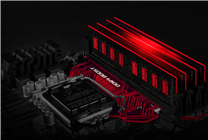NVIDIA’s Strategic Alliance with Intel: Implications for the Chip Market
Summary:
- NVIDIA is investing $5 billion in Intel, becoming one of its largest shareholders.
- The collaboration will focus on customized CPUs for NVIDIA’s AI platform, integrating NVIDIA GPUs into Intel’s SoCs.
- AMD faces mounting pressure as this partnership could diminish its competitive edge in high-performance chip markets.
On September 21, NVIDIA announced a significant investment of $5 billion in Intel, positioning itself as one of the chipmaker’s largest shareholders. This strategic alliance is set not only to fortify their business relationship but also to pave the way for collaborative product development.
As part of this partnership, NVIDIA will customize Intel’s CPUs specifically for its AI platforms, with Intel playing a key role as the supplier. In turn, Intel will integrate NVIDIA’s powerful GPUs, leading to the creation of System-on-Chip (SoC) processors optimized for the RTX GPU line. This cooperative framework solidifies NVIDIA’s role as the GPU supplier while emphasizing Intel’s responsibility for product integration and sales.
Importantly, both companies have clarified that their existing product lines will remain unaffected by this collaboration. NVIDIA will continue to develop its ARM processors, while Intel remains committed to its Arc standalone graphics line. Moreover, there is currently no agreement mandating the utilization of Intel’s technologies, and both corporations continue to work with TSMC for their production needs.
This unprecedented partnership raises questions about its impact on AMD. While some analysts posit that AMD is not entirely at a disadvantage, arguing that the collaboration could benefit the broader expansion of x86 architecture in the AI market, the consensus is shifting. Experts have increasingly suggested that AMD may experience intensified competition, especially post-2027, when we expect to see products developed jointly by NVIDIA and Intel enter the market.
AMD historically held a robust position in the high-performance chip sector, largely due to its full-stack competition model. AMD’s CEO, Lisa Su, previously emphasized that the company uniquely possesses both high-performance CPUs and GPUs. This dual capability has led to popular perceptions that AMD’s GPU operations can rival Intel’s CPU technology and NVIDIA’s GPU offerings.
However, the dynamics could dramatically shift with the development of SoC products combining Intel’s CPU technology and NVIDIA’s GPUs. An example of this potential is the recently announced GB10 super chip by NVIDIA. Although built on an ARM architecture, its GPU capabilities rival that of the RTX 5070. Should NVIDIA succeed in integrating a GPU of that caliber into Intel’s CPU architecture within the next two years, the implications could be game-changing.
With hardware that delivers exceptional gaming performance alongside robust AI capabilities, supported by NVIDIA’s CUDA architecture, the partnership could significantly sway consumer preferences. Once fully realized, the collaboration may erode AMD’s competitive advantage as a full-stack vendor, making it increasingly difficult for customers to overlook the enticing CUDA ecosystem, particularly when it is seamlessly integrated with Intel technology.
The anticipated collaboration between NVIDIA and Intel underlines a pivotal moment in the semiconductor industry. As the landscape evolves, it emphasizes the importance for companies like AMD to innovate continually if they wish to sustain their market position. While the current partnership seems beneficial for NVIDIA and Intel, the long-term ramifications for AMD must not be overlooked. In a rapidly changing tech environment, adaptability, strategic foresight, and innovative prowess will be critical for all players involved.
In conclusion, this unprecedented collaboration between NVIDIA and Intel promises to reshape the competitive dynamics in the chip market. AMD must prepare to navigate these changes carefully, as the landscape of high-performance computing becomes increasingly complex and competitive.









